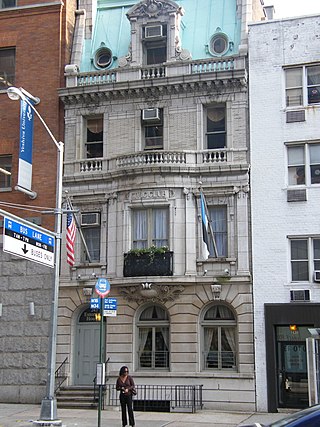
Loksa is a town and municipality in Harju County, Estonia, most known for its shipping industry.

Kalevi Keskstaadion is a multi-purpose stadium in Tallinn, Estonia. Opened in 1955 and having a capacity of 12,000, it is the traditional venue of the Estonian Dance Festival and the former home ground of JK Tallinna Kalev. The address of the stadium is Staadioni 8, 10132 Tallinn.

The history of Jews in Estonia starts with reports of the presence of individual Jews in what is now Estonia from as early as the 14th century.

Mustamäe is one of the 8 administrative districts of Tallinn, the capital of Estonia. The smallest by area, it is at the same time the second largest district by population with 66,305 inhabitants . It is located 5 km from the centre of Tallinn and is bordered by the districts of Haabersti, Nõmme, and Kristiine. Local housing is mostly represented by panel blocks of flats five to nine storeys high, built in the 1960 to 1970s.
The Estonian Academy of Music and Theatre began as a mixed choir of the Estonia Society Musical Department (EMD) on the eve of World War I. The assembly of the Estonia Society created the Tallinn Higher Music School on November 17, 1918. The opening ceremony took place on September 28, 1919. In 1923 the educational institution was renamed the Tallinn Conservatoire. In 1938 the State Drama School was opened. In 1993 the school was renamed the Estonian Academy of Music. In 1995 the Drama Faculty was renamed the Higher Theatre School.

Kehra is a town in Anija Parish, Harju County, Estonia, best known for its pulp and paper mill. The town stands on the banks of the Jägala River, and it has a station on the Tallinn–Narva railway. As of January 1, 2023, the town had a population of 2,694.

The Estonian Students' Society is the largest and oldest all-male academical student society in Estonia, and is similar to the Baltic German student organizations known as corporations (Corps). It was founded in 1870 at Tartu. It has over 900 members in Estonia and abroad.

The Estonian Academy of Arts is the only public university in Estonia providing higher education in art, design, architecture, media, art history and conservation-restoration. It is based in Tallinn.

Paul Nikolai Kogerman was an Estonian chemist and founder of modern research in oil shale.
Kersti Merilaas was an Estonian poet and translator. In addition, she wrote poems and prose for children and plays.
The Estonian Writers' Union (Estonian: Eesti Kirjanike Liit, abbr. EWU is a professional association of Estonian writers and literary critics.

The Civic Club building, now the New York Estonian House, is a four-story Beaux-Arts building located at 243 East 34th Street between Second and Third Avenues in the Murray Hill neighborhood of Manhattan in New York City.
Lia Looveer BEM was an Estonian émigré political activist in Australia.

Estonia, officially the Republic of Estonia, is a country by the Baltic Sea in Northern Europe. It is bordered to the north by the Gulf of Finland across from Finland, to the west by the sea across from Sweden, to the south by Latvia, and to the east by Lake Peipus and Russia. The territory of Estonia consists of the mainland, the larger islands of Saaremaa and Hiiumaa, and over 2,300 other islands and islets on the east coast of the Baltic Sea, covering a total area of 45,335 square kilometres (17,504 sq mi). Tallinn, the capital city, and Tartu are the two largest urban areas. The Estonian language is the official language and the first language of the majority of the population of 1.4 million.

Aleksander Jaakson was an Estonian general and educator. After beginnings as a teacher in Türi, he served with the Imperial Russian Army in World War I, and was advanced to Staff Captain. During the disintegration of the Russian Republic in 1917, he returned home to establish a branch of the Estonian Defence League. He was a decorated participant in the Estonian War of Independence and later continued serving in the Estonian Defence Forces in various positions, including military education.

The Estonian Drama Theatre is a theatre in Tallinn, Estonia. It has the role of a national theatre for Estonia. The Estonia Theatre is located next door.

Gerd Neggo was an Estonian dancer, dance teacher and choreographer. She studied the musical response methods of É. Jaques-Dalcroze, trained under Rudolf von Laban in Hamburg, Germany, and in 1924 established her own dance studio at Tallinn, Estonia, and promoted modern dance and mime based on classical ballet. During the Soviet occupation of Estonia, she and her husband Paul Olak migrated to Sweden. Her contributions to the cultural heritage of Estonia, as the founder of modern dance and mime in her country, is recognised via a scholarship, awarded annually since 2011.
Anna Raudkats was an Estonian teacher and folk dance reviver. She wrote several books on Estonian folk dance, occasionally adding elements she had choreographed herself.

Rotalia is an Estonian student corporation. Its members and chapters are located around the world.

















